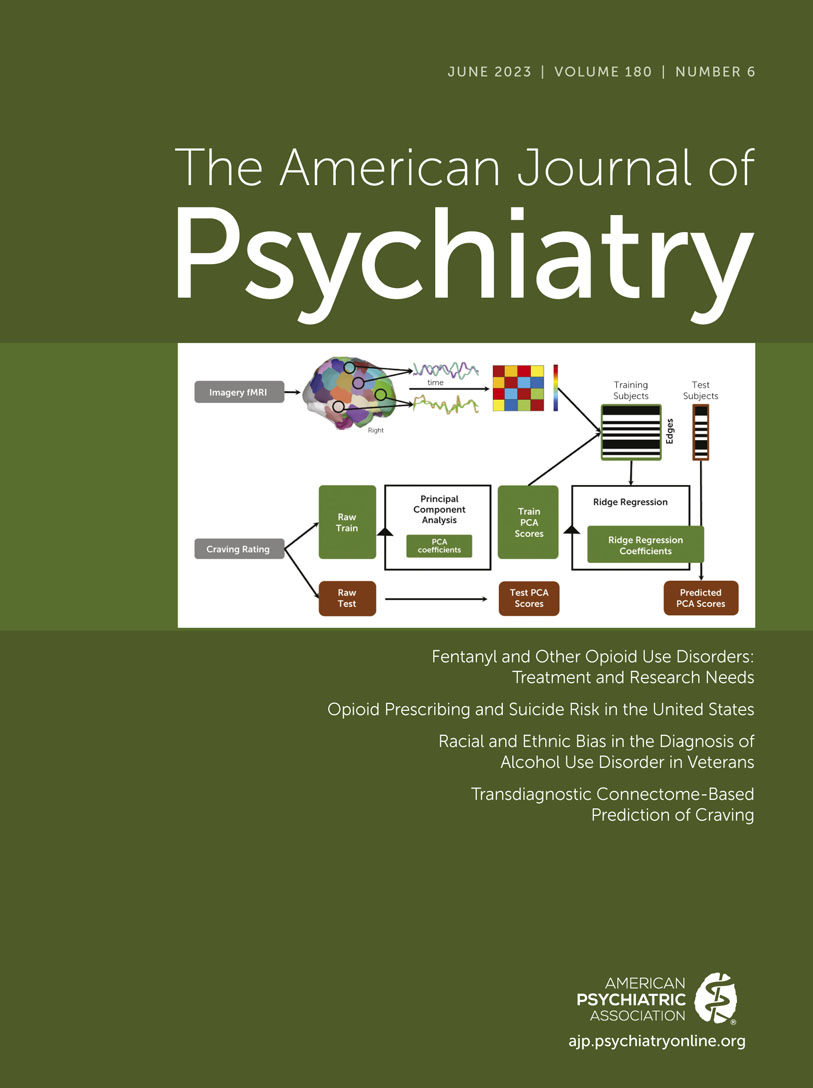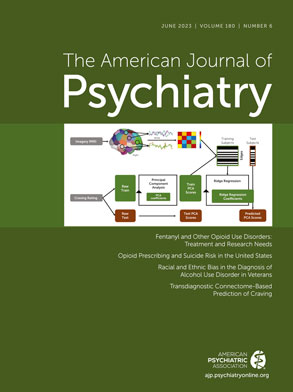Therapeutics for OUD and Overdose
Although available medications for OUD are very effective, not all patients benefit from them, and the rate of discontinuation is high (
77). Extended-release formulations facilitate adherence, and while such formulations exist for buprenorphine and naltrexone, there are none for methadone, and longer-duration formulations (>1 month) could further improve retention.
There is also a need for medications with clinical outcomes other than abstinence, which is a very high bar to achieve. It is akin to requiring resolution of depression symptoms for approval of an antidepressant instead of the current approvals based on a decrease in symptom severity. Trials of medications that could have been potentially beneficial to patients with OUD may have failed because of their inability to help achieve continued abstinence, which is the main outcome required by the FDA for approval. Thus, research is ongoing to determine benefits to OUD patients from improvements in alternative outcomes, such as decreased craving, improved sleep, decreased OUD severity, or decreased drug use, that could serve as main outcomes for FDA approvals (
78). Also ongoing is research to develop biomarkers that are acceptable to the FDA for medication development, including patient-reported outcomes.
Research on new medications includes drugs with different pharmacological properties at MORs (i.e., different intracellular signaling paths or pharmacokinetics) and drugs with targets other than MORs that involve novel molecules as well as repurposed ones. Repurposing of medications such as suvorexant (a dual orexin receptor antagonist approved for insomnia) or liraglutide (a glucagon-like peptide-1 receptor agonist approved for diabetes), if effective for OUD, would be faster to bring into the clinic. Novel drugs that target general addiction endophenotypes, such as drugs to inhibit enhanced stress reactivity (e.g., KOR antagonists and corticotropin-releasing factor receptor antagonists), decrease cue reactivity (e.g., dopamine D
3 receptor partial agonist/antagonists), modulate reward circuitry (e.g., neurokinin 1 and orexin 1 receptor antagonists), among others, are mostly in preclinical stages (
79,
80). Research on psychedelics, including psylocibin and ketamine, for OUD is in its early stages, but encouraging preliminary results have been published for nicotine dependence and alcohol use disorders (
81). Most of the available clinical data are based on the use of psychedelics to enhance behavioral treatments.
Immunotherapies based on monoclonal antibodies or vaccines targeting different opioid drugs such as heroin, oxycodone, and fentanyl have shown encouraging preclinical findings and are being evaluated clinically. The rationale for this approach is for antibodies to trap the drugs in plasma, restricting their brain access. A phase 1 trial for an oxycodone vaccine is under way, but ultimately vaccines will have to be polyvalent against the various opioids present in illicit drugs to be effective in real-world settings. Notably, previous clinical trials to test vaccines for cocaine and nicotine failed because of insufficient antibody titers. Passive immunization with polyvalent monoclonal antibodies would be advantageous over vaccines in that they lead to higher titers, but they require repeated dosing. Synthesis of longer-duration monoclonal antibodies may help circumvent some of these limitations.
Neuromodulation with invasive and noninvasive strategies offers promising interventions, whether such treatments are administered on their own or as an adjunct to MOUD. Noninvasive approaches include transcranial magnetic stimulation (TMS), direct current stimulation (tDCS), low-intensity focused ultrasound (LIFU), and peripheral nerve stimulation. Neuromodulation aims to restore the balance of neuronal networks disrupted in addiction, and the insula, anterior cingulate cortex, and dorsolateral prefrontal cortex have been the main targets tested (
82). Auricular peripheral stimulation of several cranial and occipital nerves was approved for the treatment of opioid withdrawal (
83).
Ultrasound used for ablation or neuromodulation is being studied for the treatment of neuropsychiatric disorders. High-intensity ultrasound is used to precisely destroy targeted brain regions without the need for surgery and was approved for Parkinson’s disease (
84). To our knowledge, there are no ongoing ultrasound-based ablative trials for OUD. The use of LIFU, which is nonablative, has also been proposed for therapeutic purposes. LIFU, unlike TMS and tDCS, can penetrate deep into the brain to target very specific subcortical regions noninvasively. A clinical trial is currently evaluating LIFU to the nucleus accumbens in OUD.
Deep brain stimulation (DBS) is an invasive approach that requires insertion of electrodes within the brain. DBS of the nucleus accumbens is currently being investigated for OUD (
85,
86).
The need for new overdose therapeutics has been driven by the difficulties in reversing fentanyl- and polysubstance-associated overdoses. Fentanyl overdose requires faster interventions, higher naloxone doses, and in some instances, repeated dosing. Development of fast-acting, high-affinity, and longer-acting MOR antagonists could offer advantages over naloxone. Fentanyl overdoses associated with other drugs are even more challenging. Since there is a multiplicity of drug combinations, for most of which there are no antidotes, interventions that stimulate respiration could be beneficial in general, regardless of the drug combination, as adjunctive interventions to naloxone.
Clinical Management of OUD
Although in general there is a need to guide the type of MOUD for a given patient, this need is most urgent for the treatment of individuals with fentanyl OUD. Currently, there are no reported clinical trials comparing MOUD treatments in individuals with fentanyl OUD, which may be more challenging than for other OUDs (
87,
88). Specifically, research is needed that compares the effectiveness of buprenorphine, methadone, and extended-release naltrexone, different induction protocols, and different dosages (
75).
Strategies are needed to improve retention in MOUD treatment, including for fentanyl OUD. For example, a retrospective analysis (
89) showed that coadministration of buprenorphine and antidepressants was associated with lower risk of discontinuation, but clinical trials have not properly evaluated the effectiveness of this or other medication combinations.
Another lingering question relates to the optimal duration of MOUD treatment. Although 6 months has been suggested by some, MOUD discontinuation after 6 months is associated with poor outcomes (
90), whereas longer time in treatment is associated with lower rates of relapse and mortality (
26,
34,
35,
91,
92). Studies to help determine optimal length of MOUD treatment based on patient characteristics would be valuable in guiding treatment duration.
Although the effectiveness of MOUD is well documented, a major challenge has been to increase the proportion of individuals with OUD who seek treatment, which is currently less than 20%. Thus, research on strategies to help overcome obstacles that interfere with the willingness to seek treatment (e.g., stigma against individuals with OUD and against MOUD treatments) and that expands on ways of engaging patients in MOUD is crucial.
The increasing dangerousness of illicit drugs puts individuals without an OUD diagnosis who misuse opioids at risk of overdose as well. However, there are no guidelines on how to treat such individuals, which includes those with subthreshold OUD or mild OUD (pre-addiction). The National Institute on Drug Abuse’s Clinical Trials Network is examining the appropriate use of buprenorphine for this patient population, but additional strategies, including research on the value of naltrexone-XR, are needed. This situation also highlights the need for screening for substance use as regular practice for clinicians in general and for psychiatrists in particular, as individuals with psychiatric disorders have higher risk for substance misuse. Similarly, patients suffering from chronic pain may be at risk of seeking illicitly manufactured opioids.
Finally, as our understanding of the neurobiological and social contributors to high-risk drug use expands, it should be used to inform prevention efforts across the lifespan (
33). Prevention should also include research on novel harm-reduction interventions, such as overdose prevention centers and drug checking to prevent people from overdosing (
93).
In summary, the increasing dominance of more potent opioids and drug mixtures in the illicit drug market has resulted in an unprecedented number of fatalities. Individuals with OUD have the highest risk of dying from opioid overdose and frequently struggle with comorbid psychiatric disorders. Treatment of OUD with MOUD alongside interventions for comorbid conditions will improve treatment retention, prevent overdoses, and facilitate recovery, and screening for opioid misuse will help prevent OUD and help with early OUD treatment initiation.

